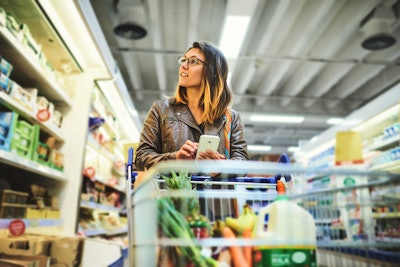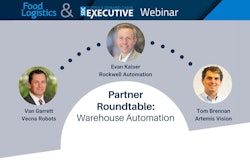
Consumer health trends come and go, but what about consumer trends around sustainability and the overall health of our climate?
With an increase in climate consciousness among consumers, people are more mindful of the personal and social impacts of their purchase decisions. An increase in sustainable, climate-friendly products follows this trend. Simply put, public awareness of individual and collective carbon footprints is growing, and that growth shows no signs of stopping.
In order to preserve the loyalty of this consumer segment, food and beverage supply chain leaders must understand the science, facts and anecdotal evidence of the climate crisis to reduce their companies’ environmental impact and meet consumers’ expectations of sustainable business practices and products.
Recent climate change trends
Human activity has resulted in more greenhouse gases in the atmosphere than ever before. Average global temperatures are at levels that haven’t been seen in thousands of years, and the frequency and severity of catastrophic weather events are increasing at alarming rates.
Although there is no way to attribute these climate catastrophes to any one person’s choices, new technologies are allowing consumers to better identify the sources of their carbon footprints. Almost nowhere is that footprint bigger than in the food and beverage industry. The planet’s food systems comprise more than 33% of all greenhouse gas emissions. Food also creates around 8 tons of emissions per household each year in the United States alone.
Consumers who have concerns about what they are eating can research that food with a few clicks on their smartphones. This allows them to make more informed purchase decisions and opt to buy products that reduce their personal environmental impact. They’re able to give their loyalty to companies that are genuinely working to lessen the environmental impacts of climate change and reduce their carbon emissions.
Click here to hear more about the food industry and sustainability:
Labels matter in food supply chains
There are a lot of positive signs that companies are beginning to take consumers’ demand for sustainability and the health of the climate seriously.
However, there is also “greenwashing” happening in the food and beverage industry — most commonly when phrases such as “natural” or “low-carbon food” are used without clear definitions. Even when definitions are provided, there is no calculation of actual emissions reductions in the production and distribution of the food product. Without tying a sustainable practice to a calculated quantity of greenhouse gas emissions, it is impossible to make a claim that a product is “low carbon.”
As consumers are becoming more aware of companies’ sustainability efforts, they are being more selective. That’s why it’s so critical to know the true carbon emission information of all products and processes. Companies can’t slap on a label that says “green” and expect consumers to trust that the product is actually made sustainably. To build legitimately sustainable products and processes, food companies must avoid greenwashing and ensure the carbon emission information included on their products’ labels is accurate. Best practices for food company executives include the following steps:
1. Educate yourself and your partners. The best place to start is by educating yourself as much as possible. Understand the recent trends and news surrounding climate change, for instance, and what other sustainable food manufacturers are doing to reduce their emissions. Additionally, stay abreast of important regulations in the industry, including how company statements on sustainability or net-zero goals should be validated and verified to avoid green washing.
It’s also important to help educate your supply chain partners. As you communicate how to reduce negative environmental impacts in the food manufacturing process, you become a better steward yourself.
2. Perform a supply chain audit. Look at your whole supply chain and the full life cycle of your product through a comprehensive, sustainable lens. If you are producing cheese, for example, you need to look at all the steps involved; examine the energy and all of the inputs that go into the process — from farm to distribution to consumers’ refrigerators.
For food production to be considered sustainable, it must encompass three main components -- It needs to be good for the environment, economically sustainable and socially sustainable. If you take any one of those elements away, food production is not truly sustainable and you can’t label it as such. Once you understand the actual environmental impact of your products and processes, you can start to be honest with consumers about the steps you’re taking to reduce it.
3. Get expert advice. You can do all of this work on your own, but having an expert come in to offer another set of eyes is important. You likely aren’t an expert on sustainable supply chains, and you don’t want to make false or embellished statements that will negatively reflect back on your company and industry. With something as complicated as measuring emissions from hundreds of different processes and reporting them properly, expert involvement is key.
Unfortunately, there is no verifiable stamp or standard measurement that says a certain food is low carbon. So, if you’re making claims that your product or process is sustainable, you have to prove it with more than a “green” label. Consumers are more educated and discerning than ever, and have more food choices than ever, too. In order to stay relevant, put sustainability first. Consumers — and the planet — will thank you.















